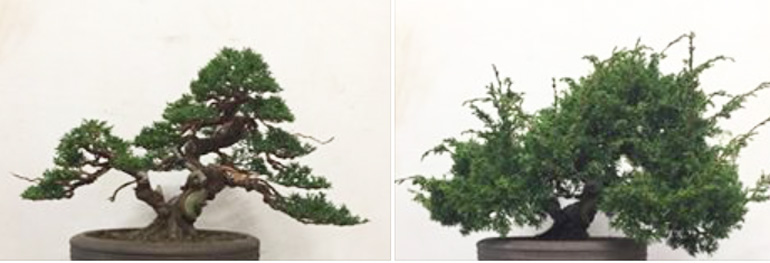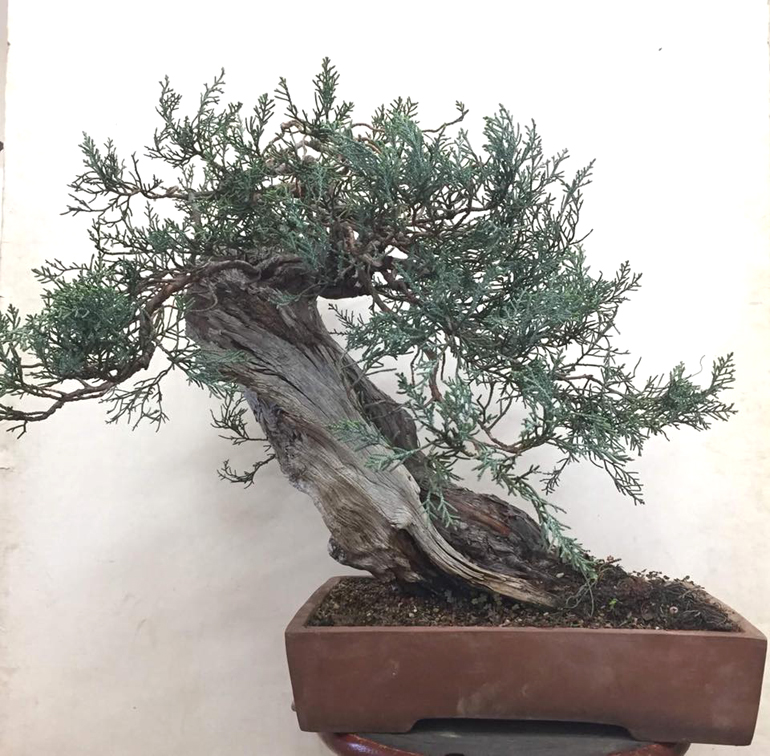A Superb Atlas Cedar Before & After Bonsai

This elegant before and after Atlas Cedar (Cedrus atlantica) is by Valentín Cruz.
Before we go any further, I’d like to invite you back to yesterday’s post to see a correction and an apology. It all started when I missed the word ‘style’…
Sticking with Valentín Cruz, our new found and very talented young bonsai artist. This time it’s a superb Atlas cedar before and after.

Before

After. Pitch perfect!
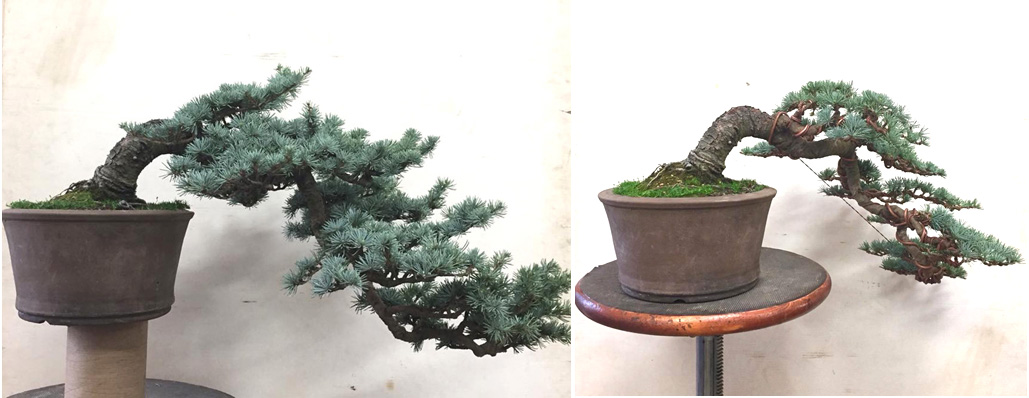
The other side
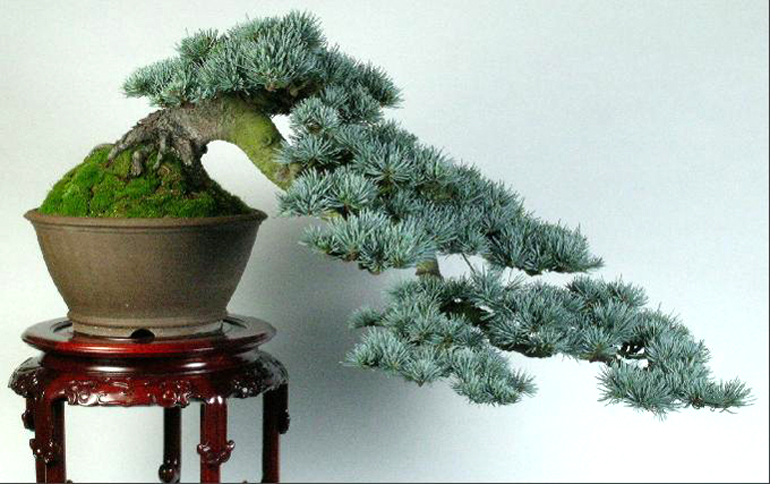
Here's a Blue Atlas Cedar by Jim Gremel that we posted back in June 2012. Jim is, among other things,Valentín's bonsai teacher and the owner of Deer Meadow Bonsai in Northern California.
Another Excellent Before & After Bonsai
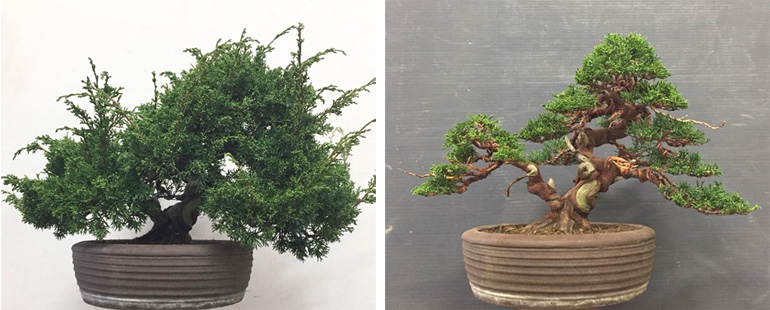
Shimpaku juniper (Juniperus Sargentii var Shimpaku) before and after by Valentín Cruz. Valentín's caption reads Yamadori shimpaku, 23 years old, which does beg a question (see below)
Last week we posted a dramatic before and after by Valentín Cruz, a young Northern California bonsai artist that we had just discovered. Now we’ve got another juniper (this time it’s a Shimpaku) before and after by Valentín. Maybe not as dramatic as the Sierra juniper, but still a job very well done, with a great eye for detail. Valentín Cruz is clearly an accomplished bonsai artist.
My only question is Valentín’s description of the tree as a yamadori (bonsai collected from the wild). I’m reasonably certain that if the tree is 23 years old, that it was field grown (plus, to my eye, it looks like a field grown Shimpaku) and I’m also reasonably certain that the use of the word yamadori is innocent. Having said this, making mistakes is nothing new to me, so it’s always possible I’m missing something. A day later… I did miss something, the word style (yamadori style) in Valentin’s caption. Moving too fast I guess. Thanks to Tony Suiseki for pointing this out and my apologies to Valentin for this oversight.
This is the before and after that Valentín posted. I put the one above together because the images aren't as clear in this one. Though the advantage here is the pot, an unessential and distracting element, is mostly cropped out.
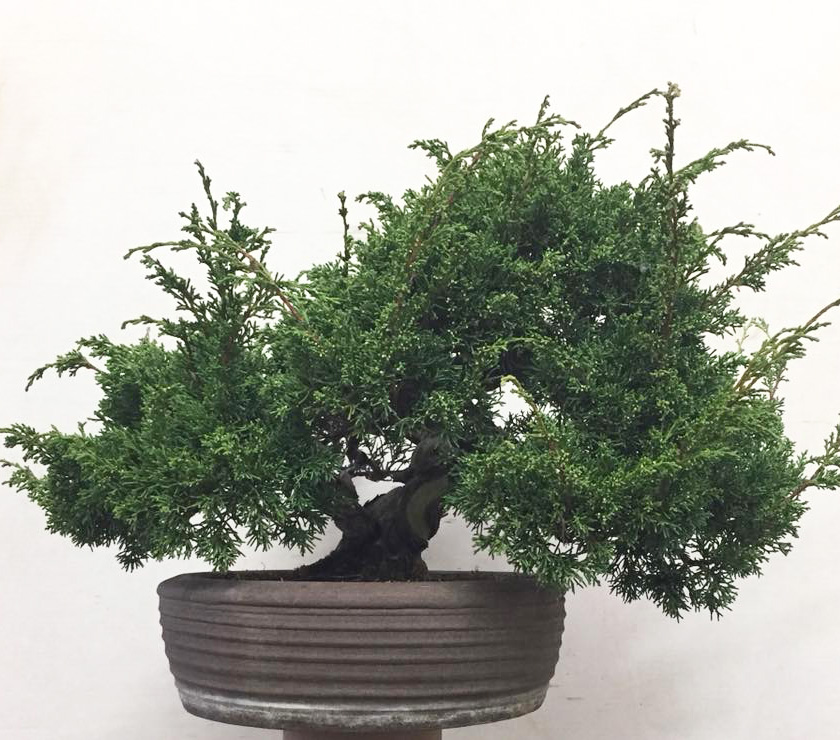
Before. It always helps to start with good stock
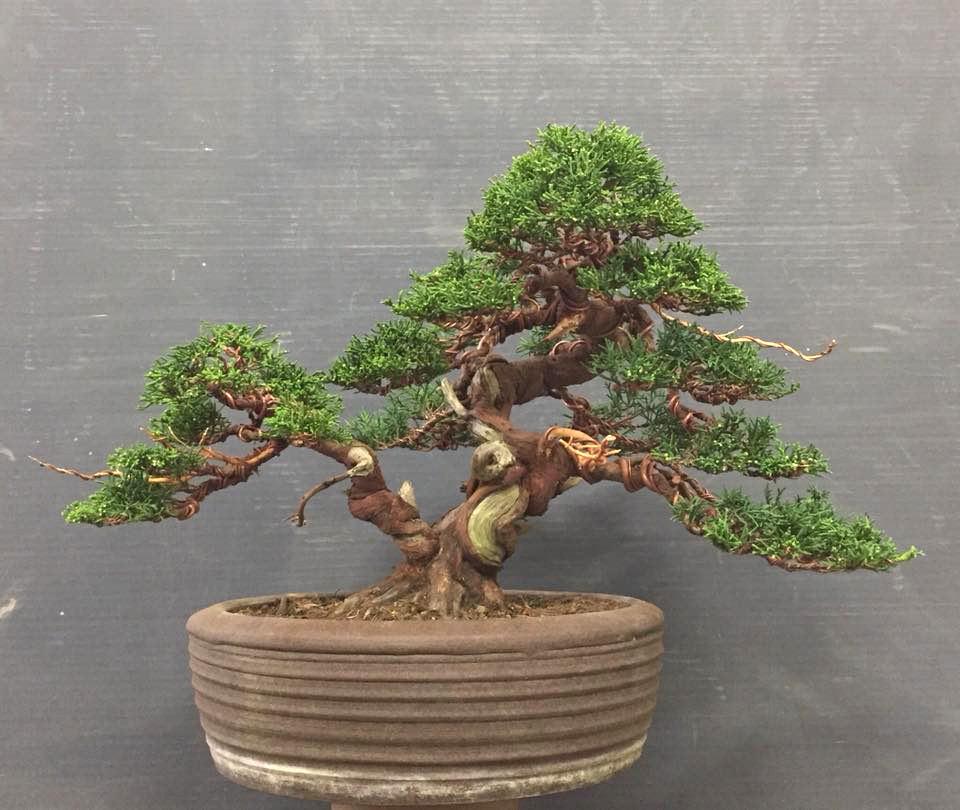
After. A job very well done. As you can see, the old pot is too heavy and distracts from the tree. I imagine that once the tree has recovered from the transformation, a new pot is in the offing.
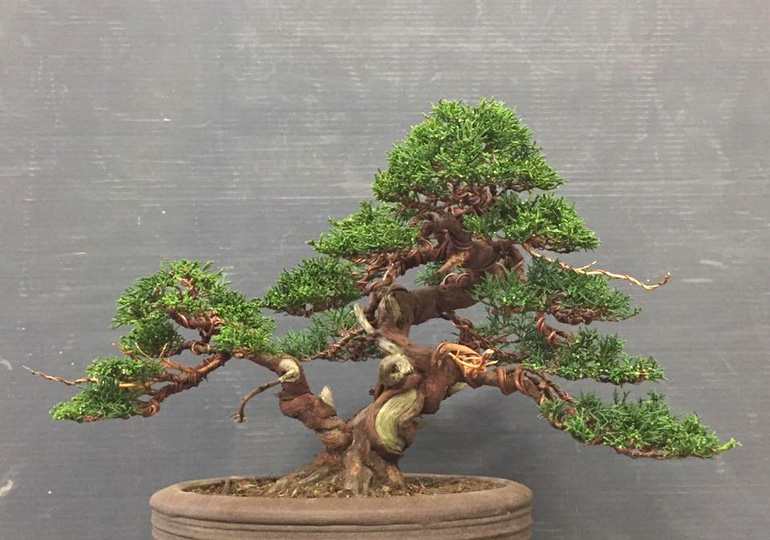
I cropped most of the pot out in this photo for a less distracting look at the tree.
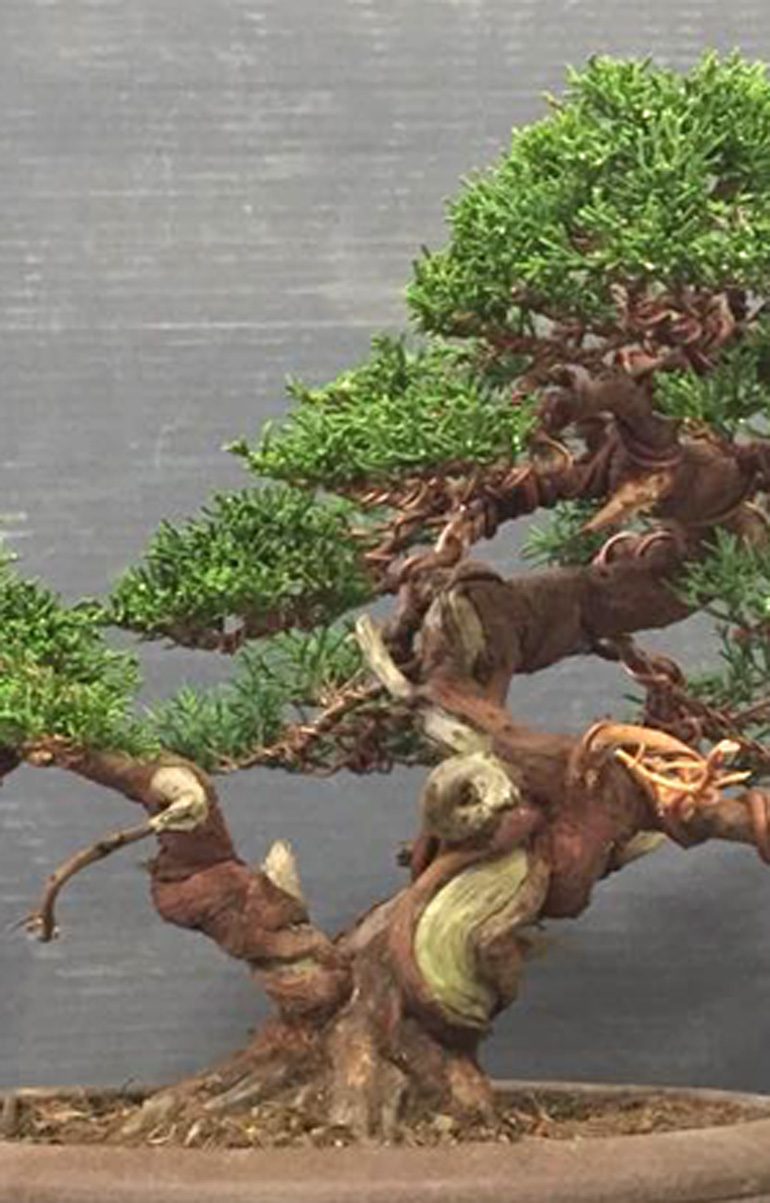
Another of my crop jobs. This time for a closer look at the trunk
Rugged Bonsai in the Perfect Setting

The natural look. This photo captures two things I love about Eladan Gardens. The first is the rugged uncontrived feel that characterizes Dan Robinson's bonsai, and the second is the perfect setting. The tree is a Sierra juniper (Juniperus occidentalis).
We seem to be stuck on Sierra junipers lately, but who’s complaining? In this case it’s only one (see above and a closeup below) with several other non-Sierra photos to enrich the experience. This post (with some changes today) originally appeared in May 2016.
Back in May, 2016 I finally visited Dan and Diane Robinson’s magnificent Elandan Gardens. It was a quick visit and all I had to shoot with was my cell. So the photos aren’t nearly as good as most of the borrowed Elandan photos from previous posts. But some shots are unique and hopefully capture something of the magic of the place.
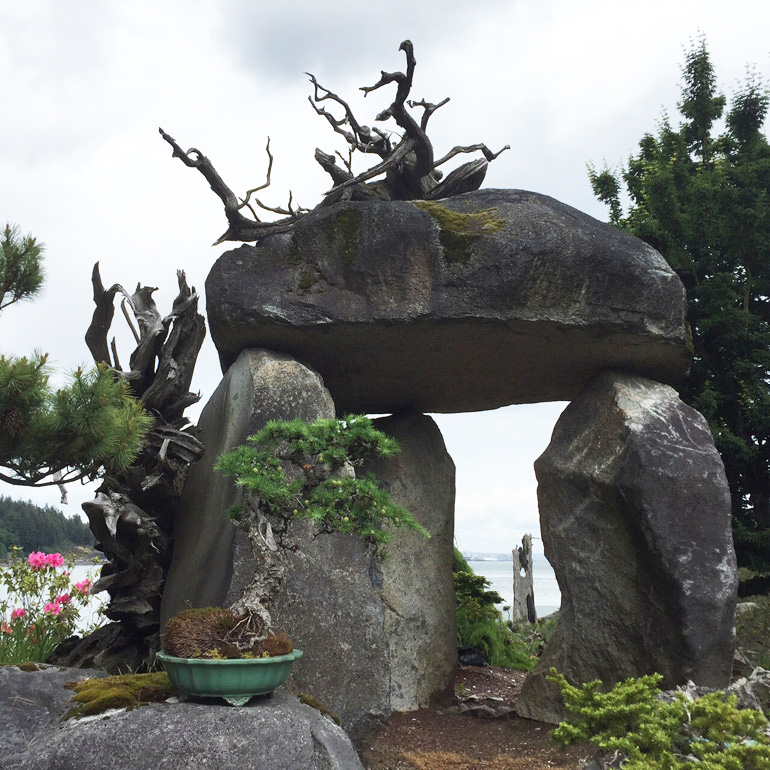
Stonehenge west with bonsai and flowers.

Water, sky, rocks, trees and a Weeping hemlock bonsai.
Dan Robinson is sometimes referred to as the Picasso of Bonsai. You can find the story and much more in this magnificent book….
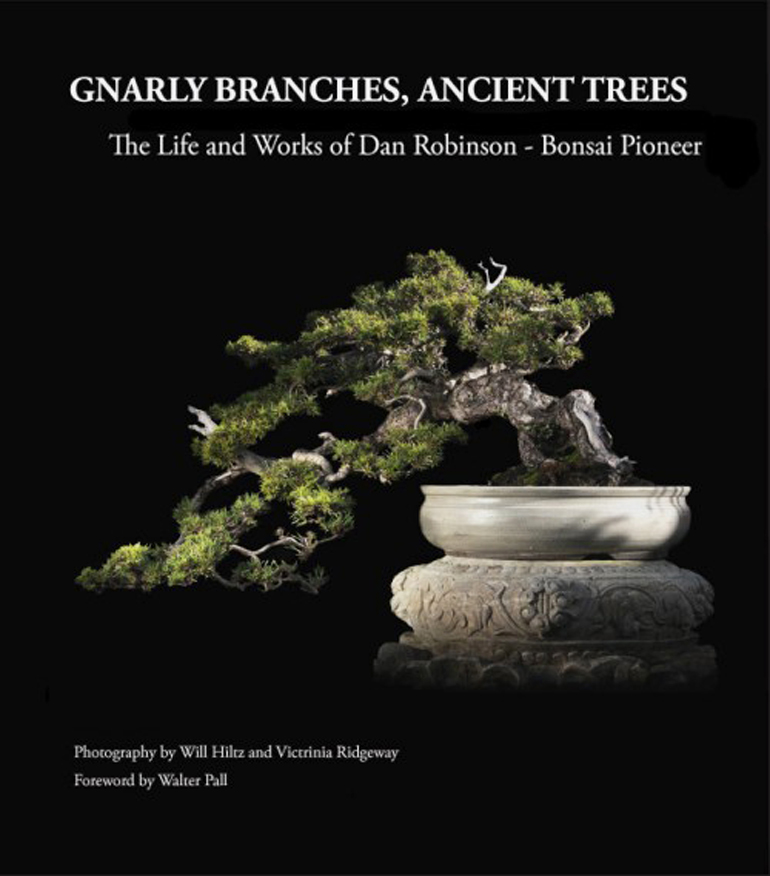
THE book, if you really want to dig into Dan Robinson's bonsai. Photos, stories, techniques, everything. By agreement with Dan and Diane, we do not discount this exceptional book.
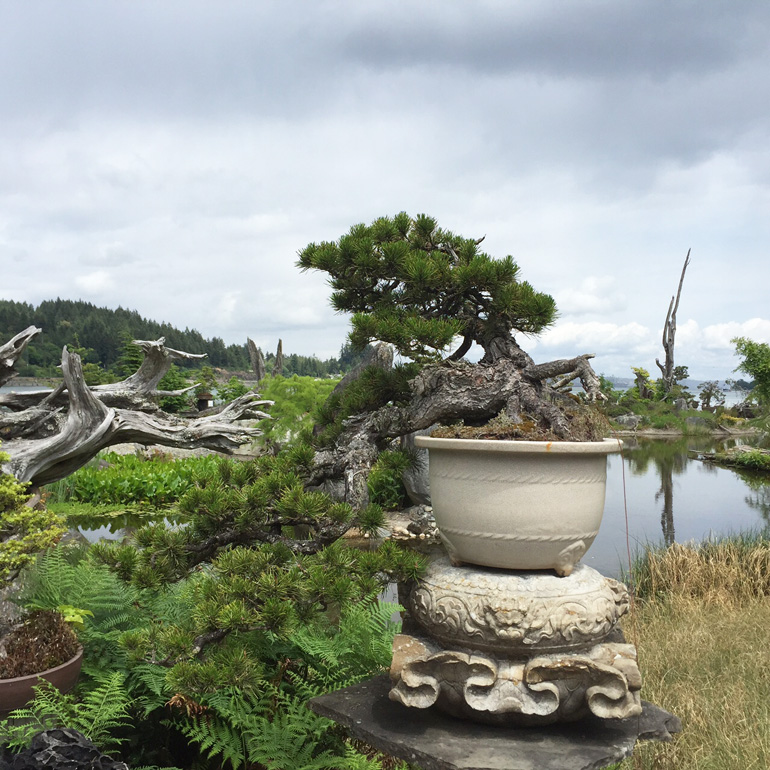
Another great view, another great bonsai. It's a large cascading pine in a large pot on a large sculptural stand.
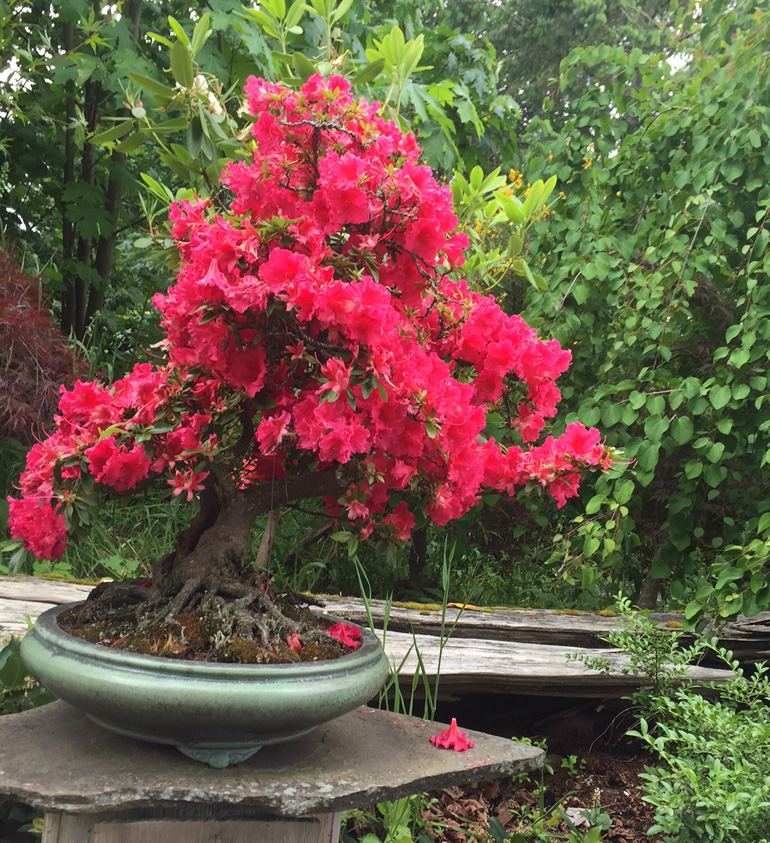
There are bright spots throughout the Garden, but this one may be the brightest of them all. We don't have to say this is an Azalea.
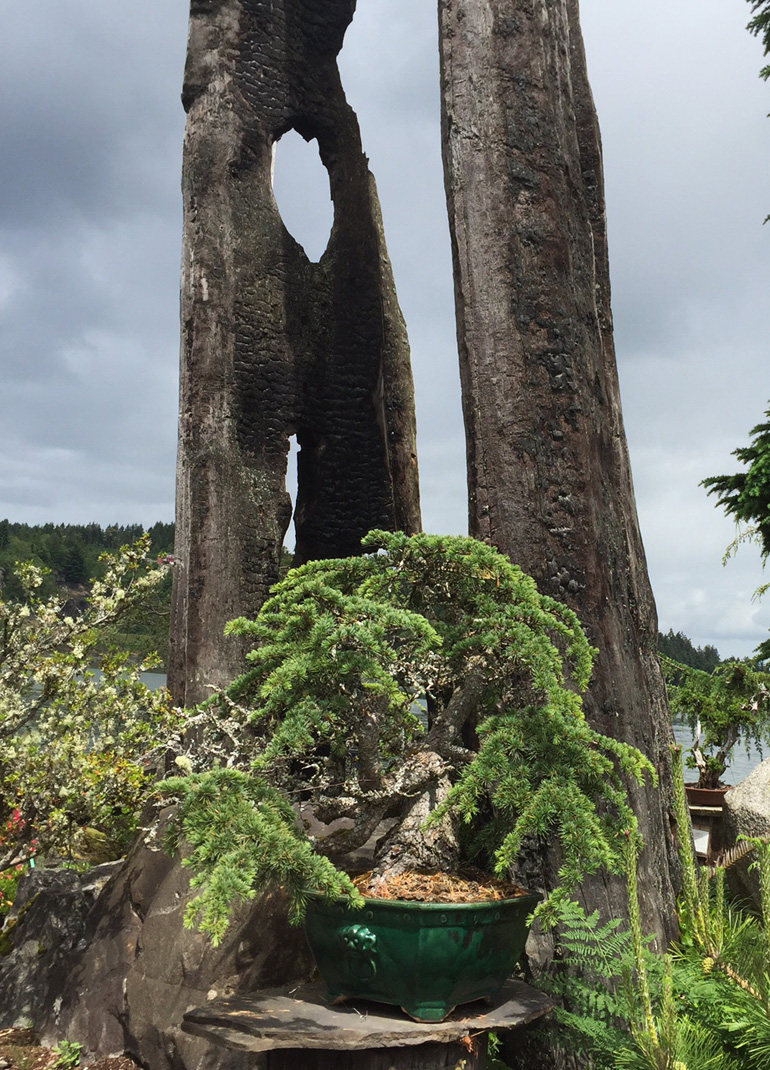
There were so many trees and memory fades quickly so I won't bother to guess.
Closeup of the Sierra juniper at the top of the post
Nature’s Bonsai & a New Identity for a Famous Tree
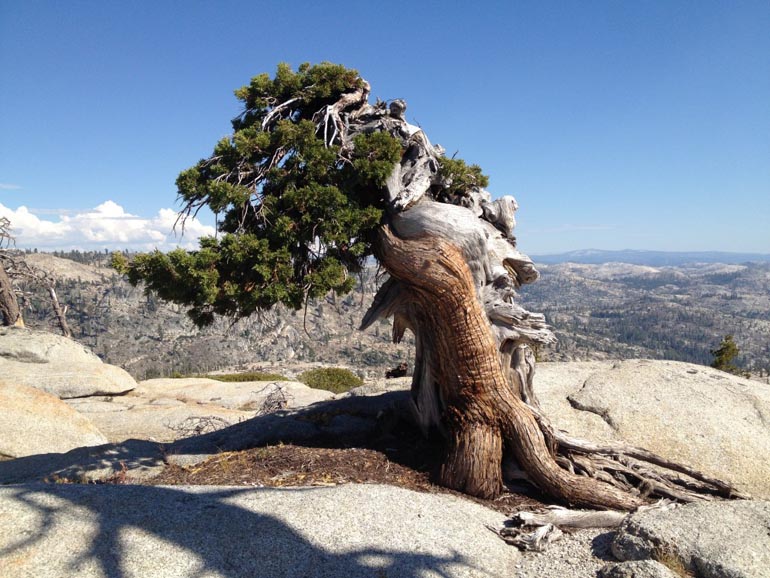
A Sierra juniper (Juniperus occidentalis) sculpted by wind and snow. It lives near Granite Lake at 8,500 feet in the Emmigrant Wilderness (near Yosemite in California's Sierra Nevada mountains). This photo and the next two are borrowed from Bonsai Society San Francisco
Still sticking with our Sierra juniper theme but with a twist (unintended). Rather than the typical yamadori we’ve been showing, this time it’s Nature’s bonsai still growing in its original home (thanks to Terry Davis of Mullet Wrapper fame for the suggestion)
The following quote which refers to the tree in the first three photos, is from Bonsai Society San Francisco… “The tree is about 7 feet tall and has the shape of a bonsai after many years…”
Continued below…
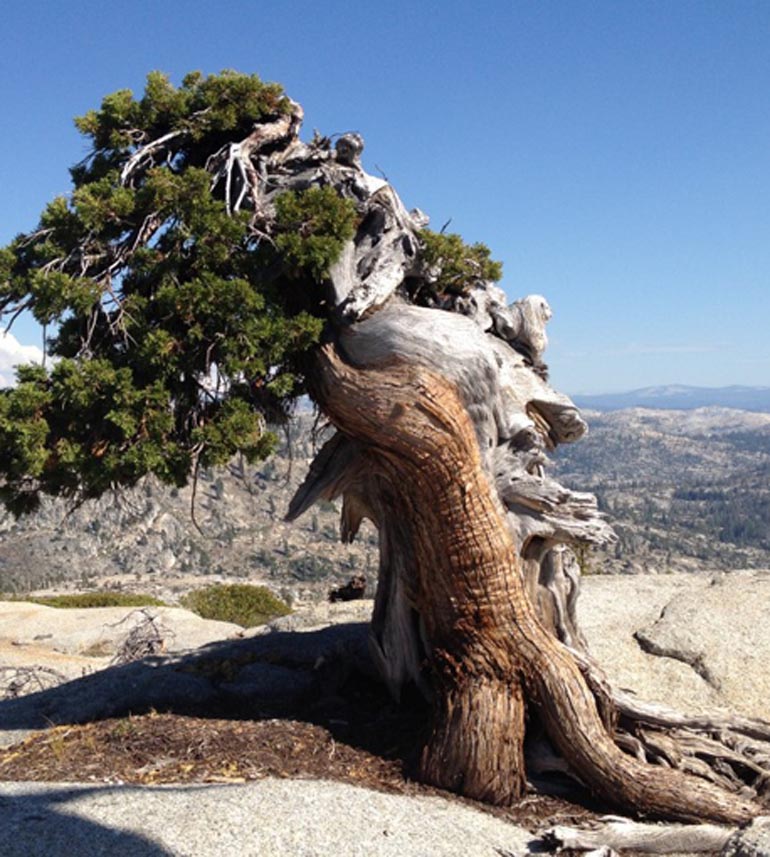
I cropped the original for this closer view
Continued from above…
“This tree shows that under harsh conditions we see that the lifeline on the top of the tree or on the windward side is frequently killed while the lifeline that is more protected is the portion that soldiers on, gaining protection from some of the environmental harshness from the deadwood sections. Where the wind and snow conditions are particularly harsh the successive killing of portions of the lifelines can cause the live sections of some branches and trunks to seem to melt over the dead sections that they neighbor.”
Quoted from Bonsai Society San Francisco

"Detail of deadwood on the top of the windward side of the tree. The different sections appear to melt together."
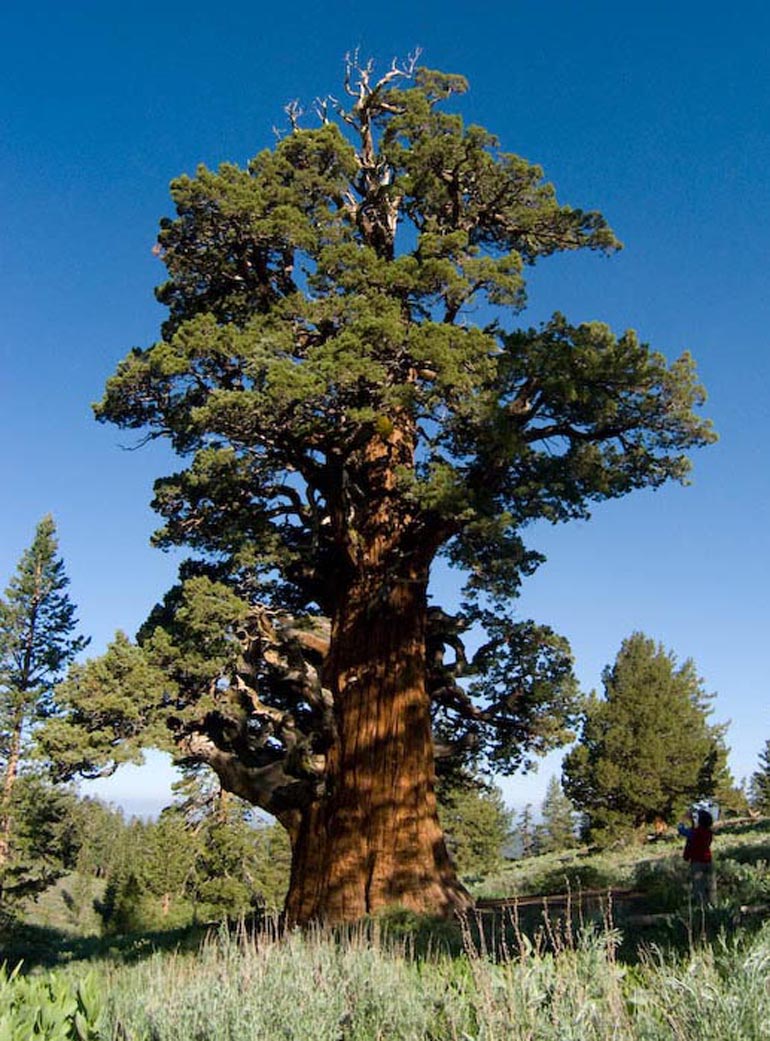
The most famous Sierra juniper (or is it a Sierra juniper?, see below) is called the Bennett Juniper. You can visit it in the Stanislaus National Forest of California. It's considered the oldest and largest Sierra juniper (or Juniper period?) at possibly 3000 years old, with a height of 26 meters (85 feet) and a diameter of 3.88 meters (almost 13 feet).[2]
For a long time the Bennett juniper was considered to be a Sierra juniper (J occidentalis), but according to Wikipedia, it was recently reclassified as different species (Juniperus grandis).*
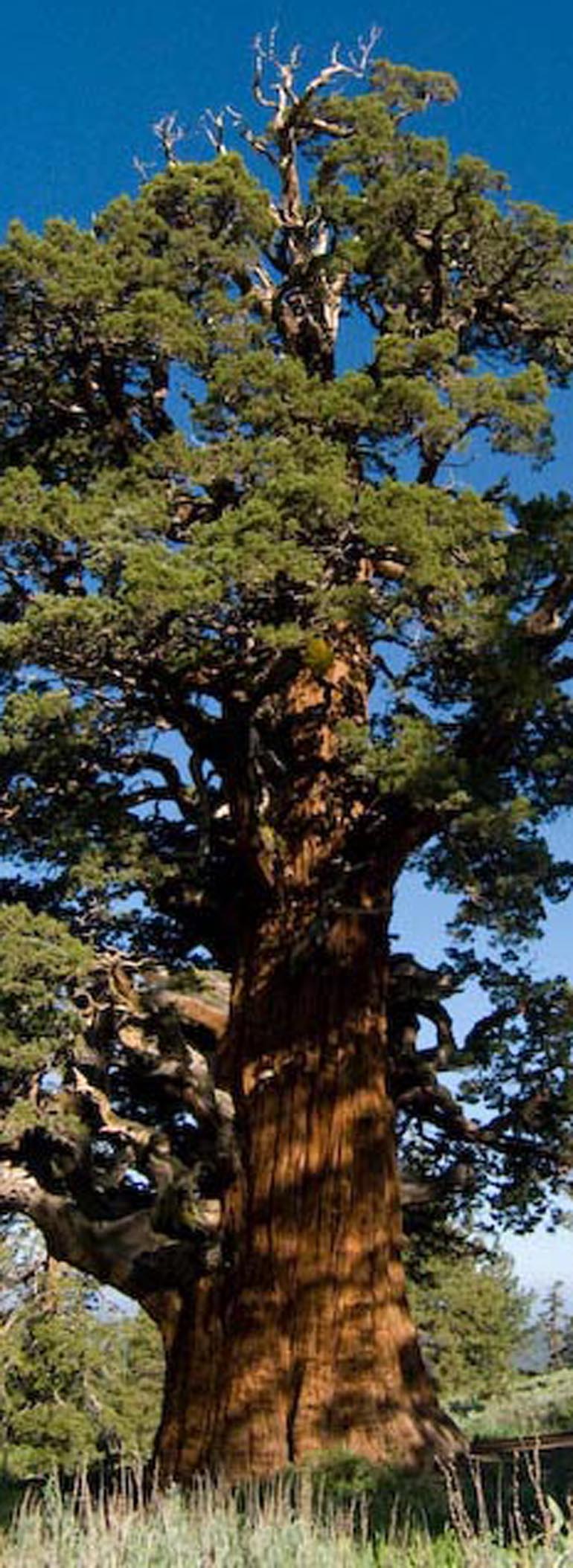
Cropped for a closer look at the trunk
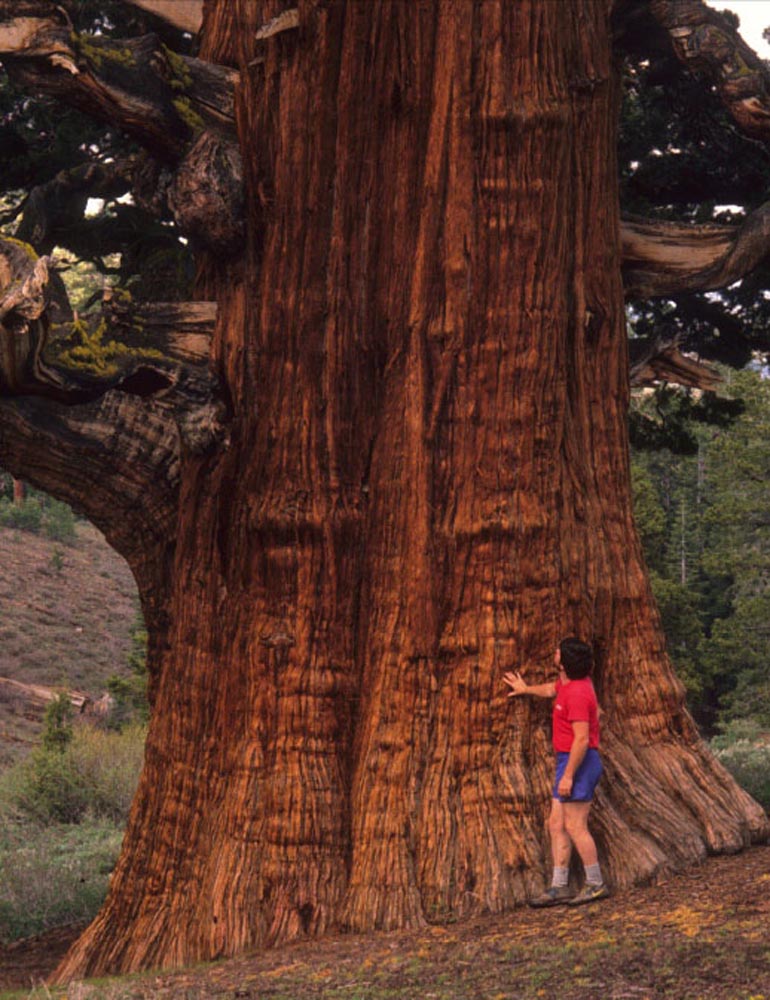
A little perspective
*From Wikipedia… “Originally the Bennett was considered to be a Western juniper (Juniperus occidentalis – Western juniper is another common name for Sierra juniper). Over time the differences between the northern and southern populations of western junipers justified dividing them into two subspecies and the Bennett is in the southern population which was named Juniperus occidentalis australis. A field guide published by UC Press in 2001 gives the common name Mountain Juniper for the australis population.[3] DNA studies (2006) by Adams[4] resulted in the southern population being raised to species status and it was given the common name “grand juniper” (Juniperus grandis). This name and status is recognized in the USDA Plant Database.[5]“
Bonsai Boon: A Sierra Juniper’s Eight Year Journey
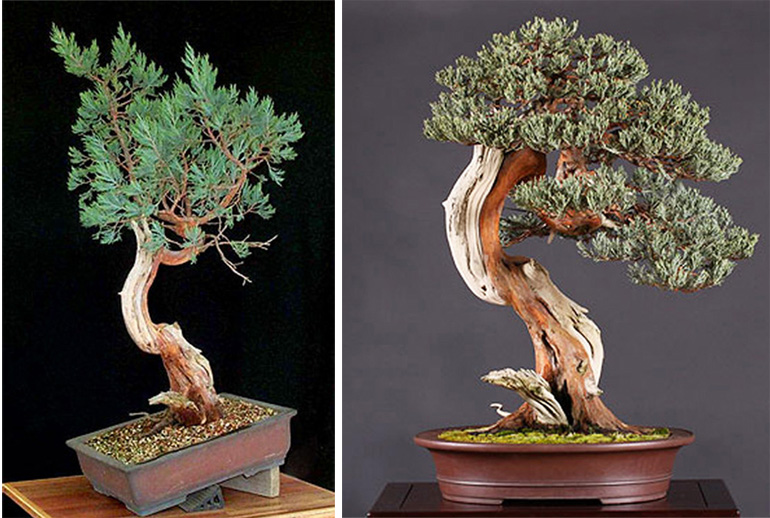
Sierra juniper (Juniperus occidentalis) before and after by Boon Manakitivipart
Staying with our Sierra juniper theme, this impressive bonsai originally appeared here in December, 2009 (approximately 3,000 posts ago)
We’ve featured Boon Manakitivipart on this blog numerous times over the years, and for good reason. Boon is a highly accomplished bonsai artist and teacher whose enthusiasm and skill has influenced a generation of aspiring Western bonsai artists. If you are serious about improving your skills, you might want to check Boon’s intensives.
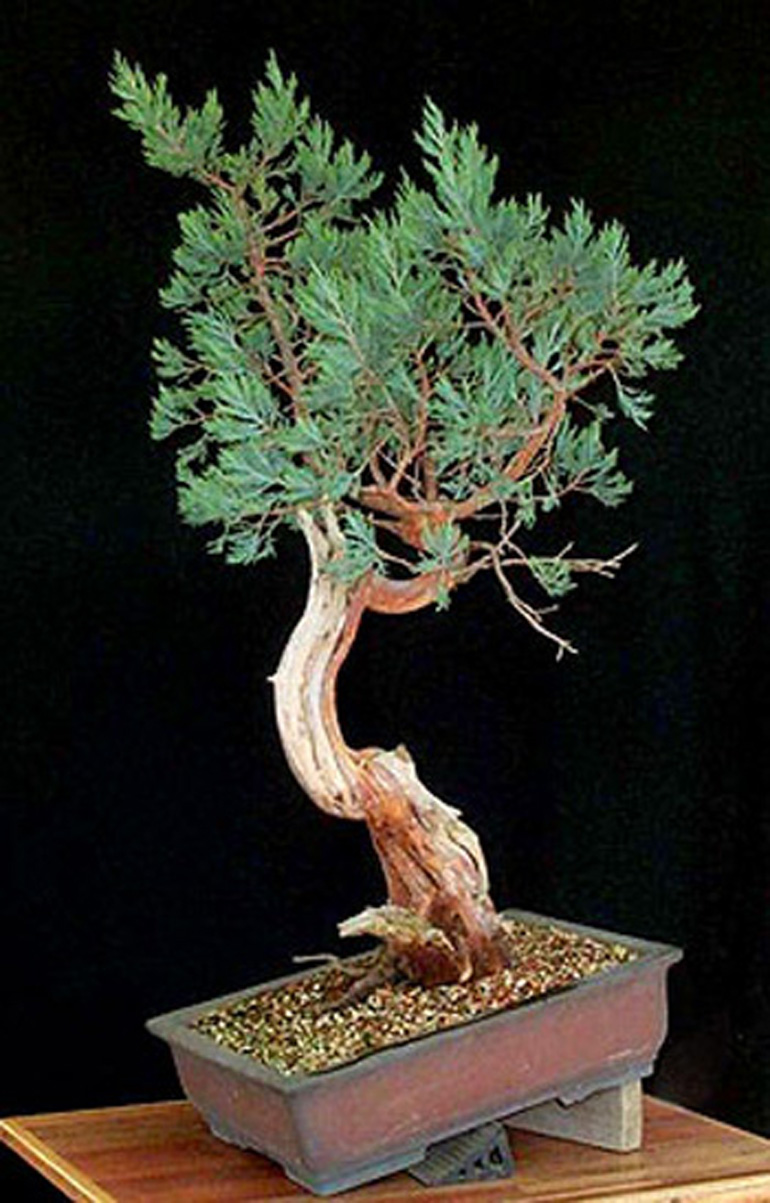
Before. June 2001. Sierra juniper that was no doubt collected somewhere in the mountains of the far west.
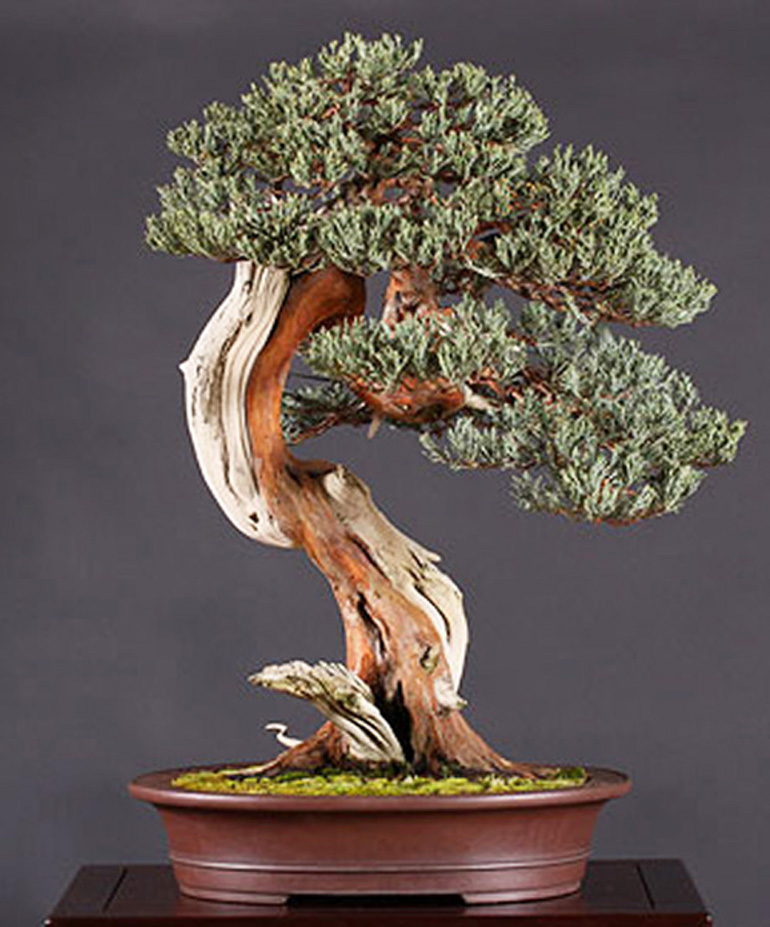
After. January, 2009 at Bay Island Bonsai's show An Exhibit of Fine Bonsai. If you go to Styling on Bonsai Boon you can see how Boon got from before to here.
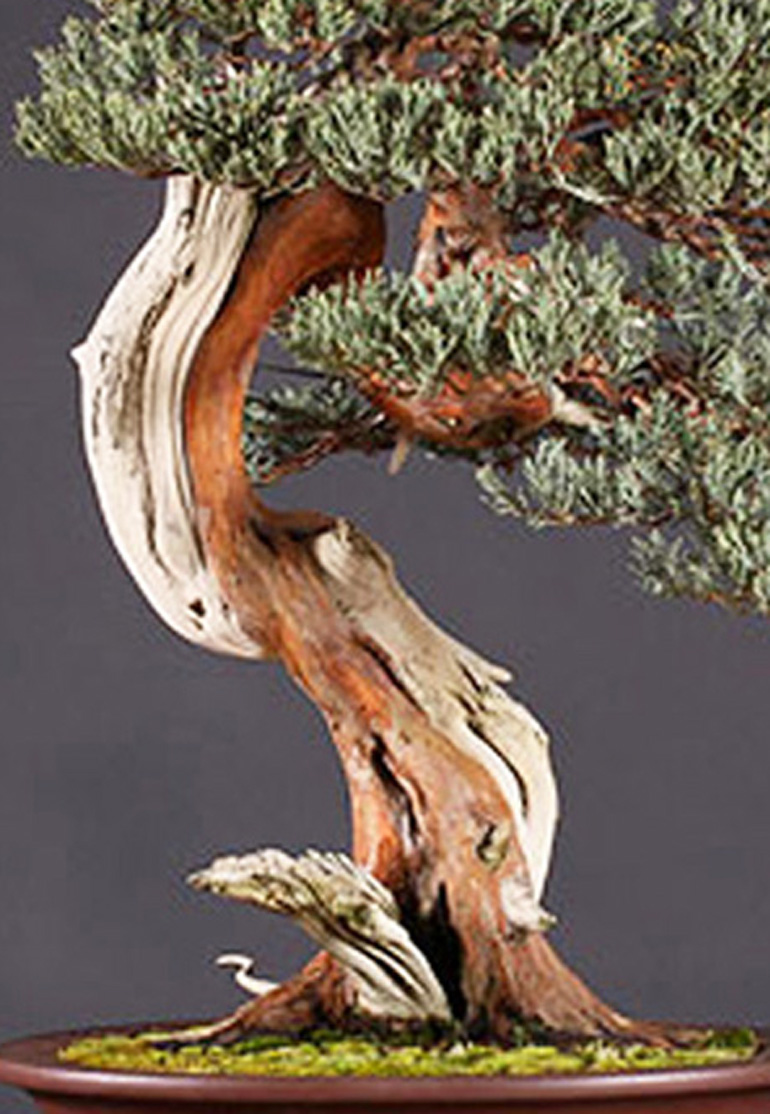
After. A closer look at the trunk
Prize Winners & Other Extraordinary North American Bonsai

The second place tree at the Artisans Cup (fall of 2015). It's a Sierra Juniper that belongs to Tim Priest. The other winners are below
Continuing with yesterday’s Sierra juniper theme (see the tree above). This post originally appeared here in March, 2016 (with a few updates today).
It has been about two and one half years since the Artisans Cup, a ground breaking event at the Portland Art Museum that featured more jaw dropping bonsai than most people will ever see in one place.
Eric Schikowski’s collected Mountain Hemlock was one of my favorites. It was also Peter Warren's first choice (Peter was one of the judges), though it wasn't awarded one of the three prizes (actually four; there were two third place winners). I borrowed this photo and the one below from Eric Shrader's PHUTU blog.
While we’re on North American bonsai exhibitions, I’d like to encourage you to plan your visit to the 6th U.S. National Bonsai Exhibition this fall which promises its own crop of jaw dropping bonsai.
Here's another one my favorites, and though it didn't place in the top three, it was Colin Lewis's first choice (Colin was one of the judges). It's a Doug fir that belongs to Doug Paul (sorry, couldn't resist).
Ryan Neil's massive Engelmann spruce (Picea engelmannii). This (pick your adjective) tree was not part of the bonsai display area, but rather sat alone in an inner lobby that you passed through on the way out of the display area. There's no way that you can appreciate just how massive it is, and though I didn't think to pace it off at the time, by memory (a risky proposition at best), I'd reckon that it must be about six or seven feet (approx 2 meters) across.
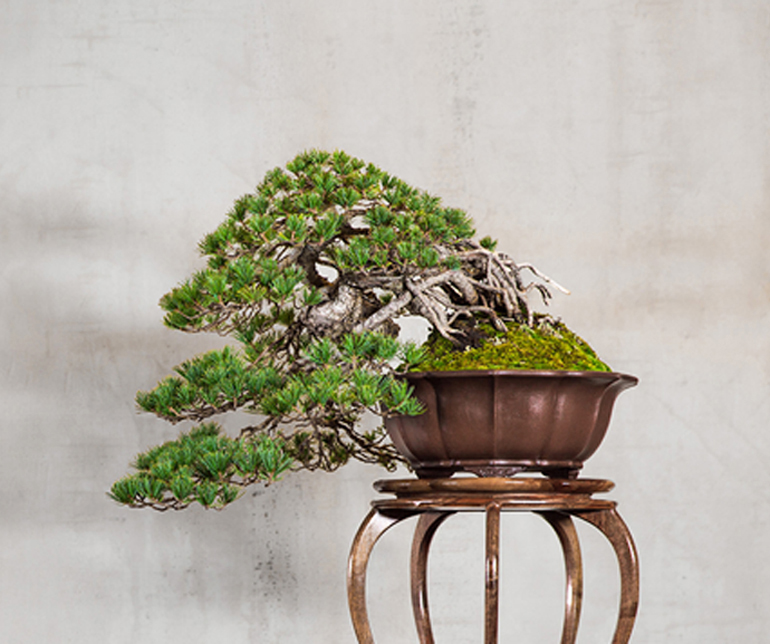
This Japanese White Pine that belongs to Konnor Jenson was one of two third place trees.
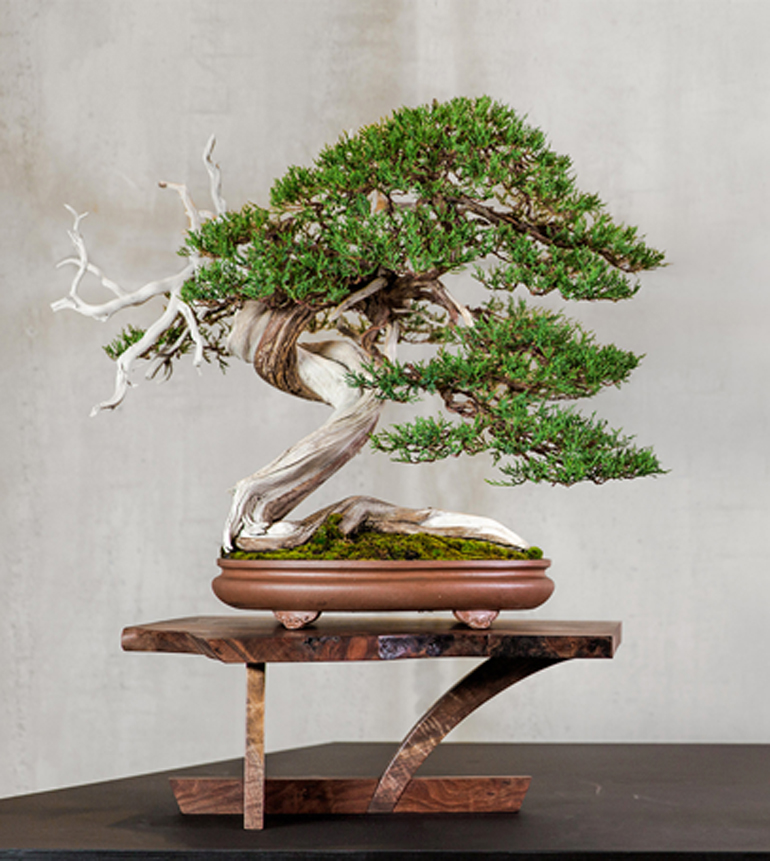
The other third place tree. It's a Rocky Mountain Juniper that belongs to Amy Blanton.
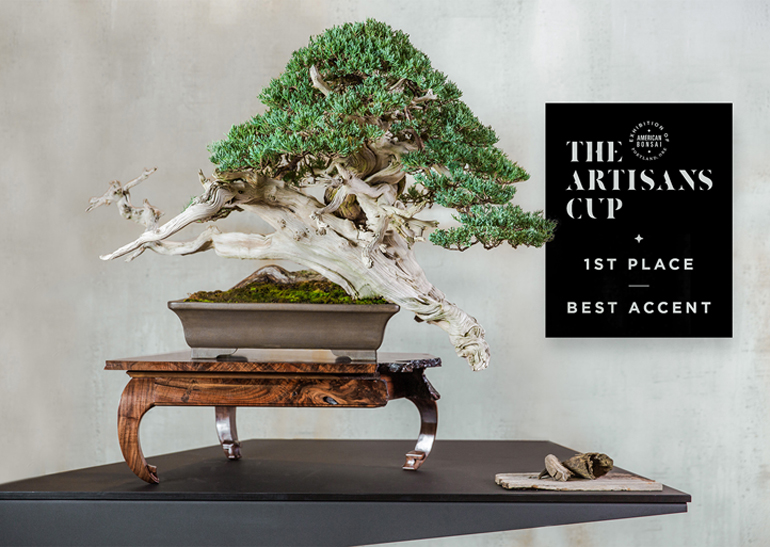
The winner, a massive Rocky Mountain Juniper that belongs to Randy Knight.
A Dramatic Before & After Bonsai
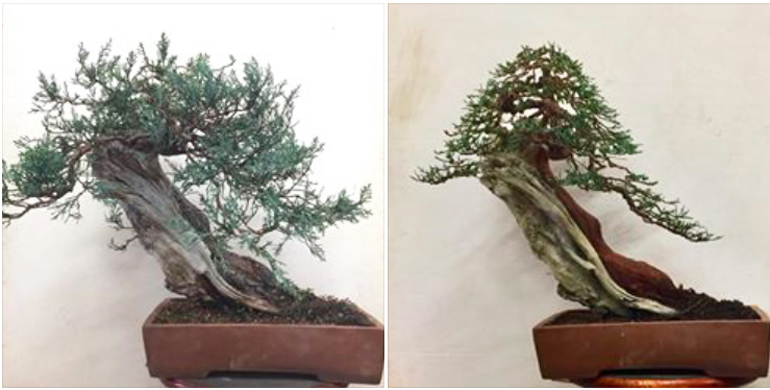
An impressive Sierra juniper(Juniperus occidentalis) transformation by Valentín Cruz. It was originally dug by Ned Lycett
Before we start, we’ve got an update on yesterday’s post, thanks to Bill Valvanis (see below).
Here we go again with another exceptional before and after bonsai. I found it on the artist’s timeline. His name is Valentín Cruz and a couple hours ago I had no idea he existed. My guess is you didn’t either, but if you spend some time looking him up you most likely won’t forget him. By the way Valentín’s bonsai teacher is Jim Gremel, an artist we’ve featured several times over the years.
Before. It helps to start with a powerful trunk and lots of natural deadwood
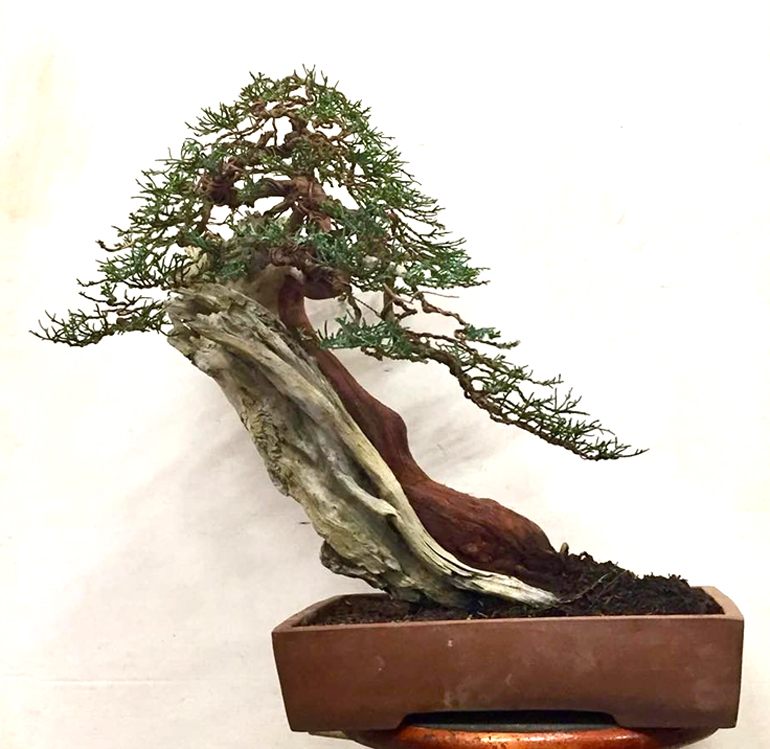
After. Not bad
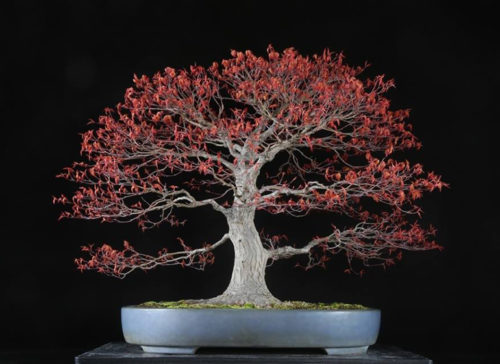
Yesterday's Japanese maple, which, thanks to Bill Valavanis, we now know more about than we did 24 hours ago. Here's what Bill wrote... "That maple is from SEIJI Morimae’s web shop. S Cube Bonsai. 70 years old. $2,300.00" Great price btw.
Is There a Best View for this Exceptional Japanese Maple?
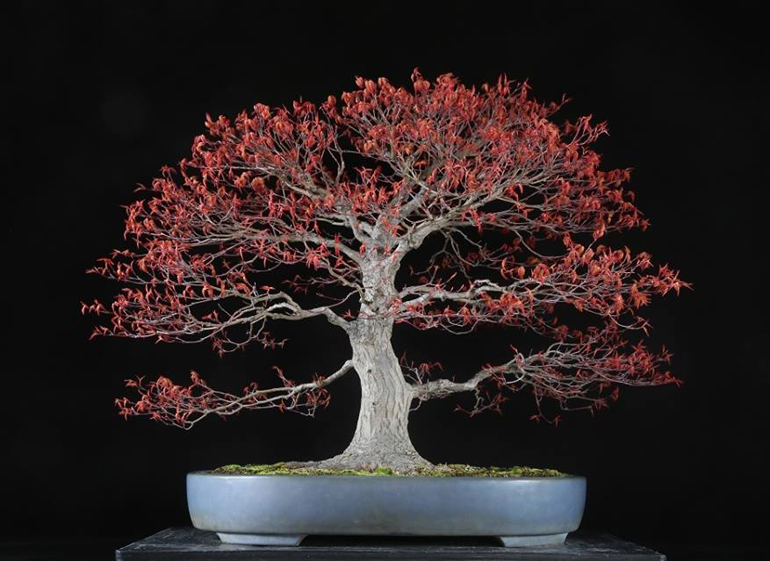
One possible front view of a freshly leafing Japanese maple. But this is not just any Japanese maple; it's an exceptional one and it's in an exceptional (and probably very expensive) pot. I borrowed this photo and the others shown here from Michael Bonsai. Michael doesn't mention the artist or owner, but we'll give him a pass as he is a very good source for professional quality photos of excellent Japanese bonsai.
If you’re a bonsai enthusiast, spring starts when buds begin to swell. Here in northern Vermont, trees in the ground aren’t quite there yet, but my trees that are just out of winter storage certainly are. Time to start repotting
We won’t go too far into the optimal time to repot, as variables abound, though many bonsai artists say the best time is when the new buds are just starting to swell, while others don’t hesitate to repot when the leaves are already opening. And then there are those who transplant even later. I guess it depends on your confidence, knowledge and how much root pruning is necessary.
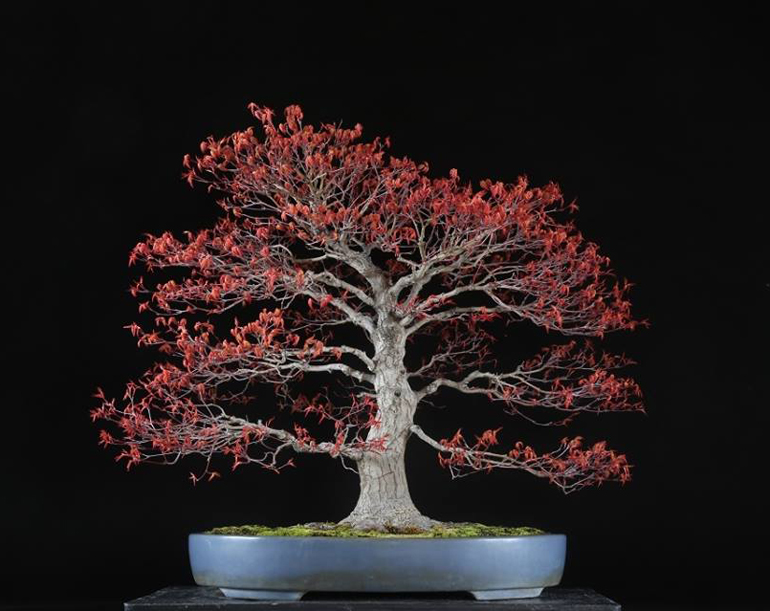
The other side and other possible front. Because the pot is oblong, right now there are only two possible fronts (best views) for this tree. However if it were in a round pot (or if you want to repot it), then we might change our mind on best view (speaking of, there are differing opinions on the whole notion of front and back and so forth, but we won't get into that here)
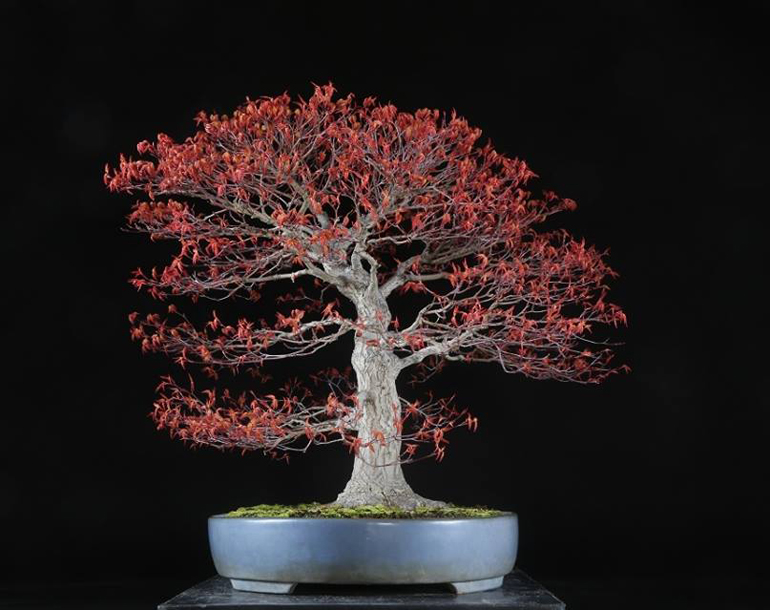
Because of the pot, you'd call this a side view, But could this be the front if you repotted?

The other side and perhaps another possible front
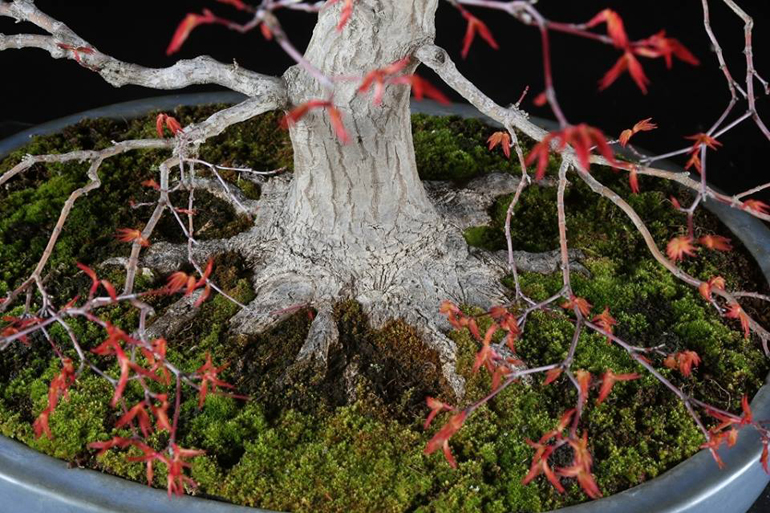
Great nebari. The work of a top flight bonsai artist/technician –
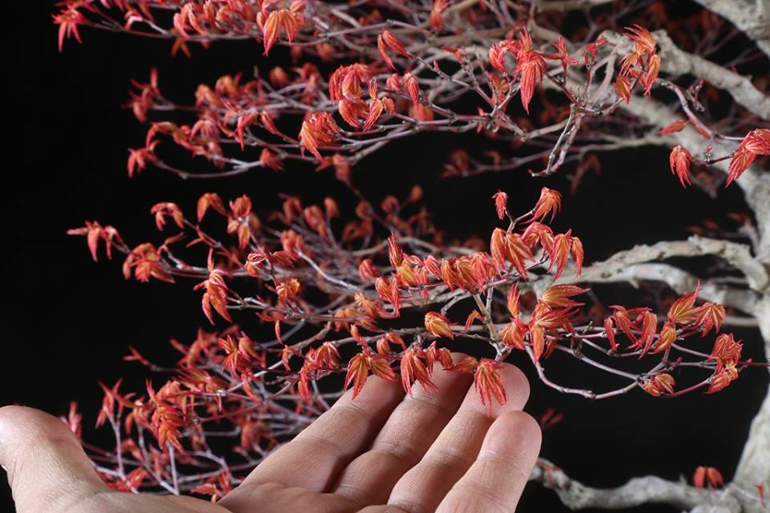
Tender new leaves
Great Close Ups and other Bonsai Wonders
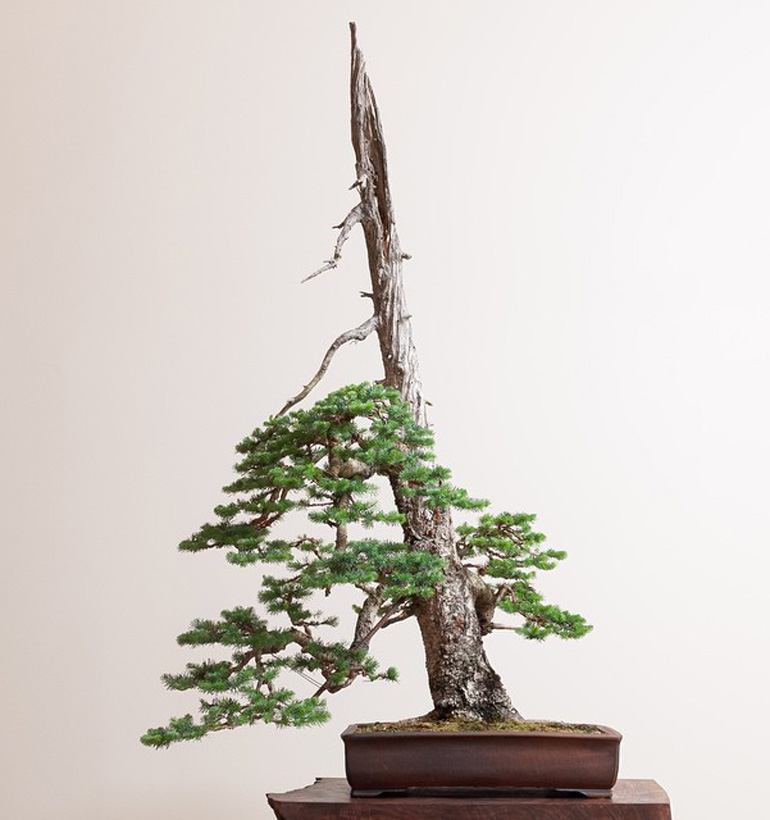
It's not that often that you'll find a tree with with the top half of the trunk deadwood. When you do, and in the right hands, the result can be striking. It's a Subalpine Fir (Abies lasiocarpa) that belongs to Ryan Neil (Bonsai Mirai). All the photos in this post are from Ryan's facebook photos.
One of the things I like about Ryan Neil’s photos are his close-ups. It doesn’t hurt that his trees are phenomenal and so well photographed in the first place. But then to show such vivid close-ups invites you in further. Like you are there in the studio.

Close up. Here's Ryan's caption: "Sub alpine fir, Abies lasiocarpa collected in the Washington Cascades. The dead top and contorted branches tell of the rugged alpine environment."
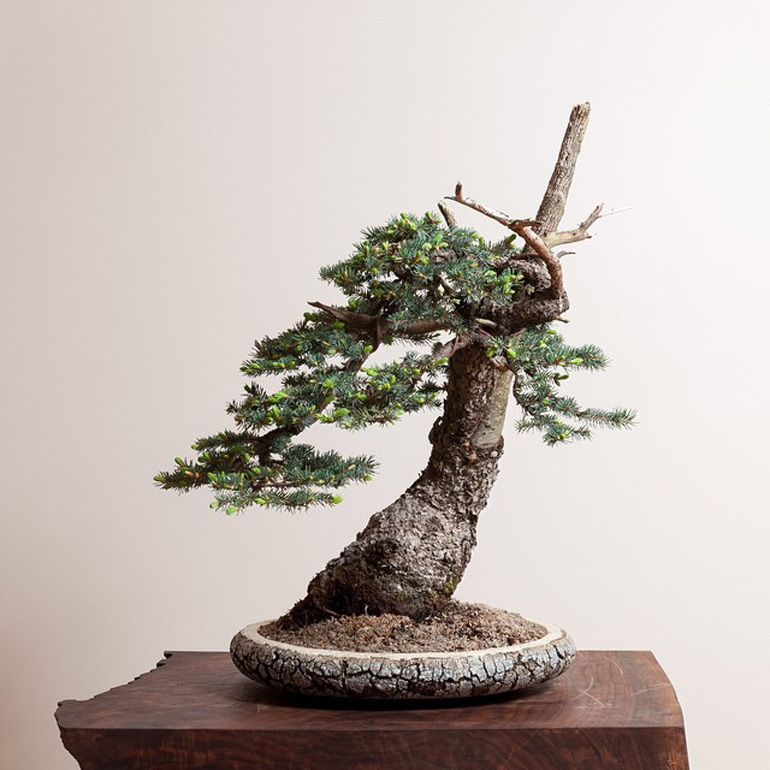
Ryan's caption: "Colorado Blue Spruce. Picea pungens. Collected from the Rocky Mountains. | This tree is nostalgic for me, having grown up in Colorado. Spruce are part of the landscape of my childhood."
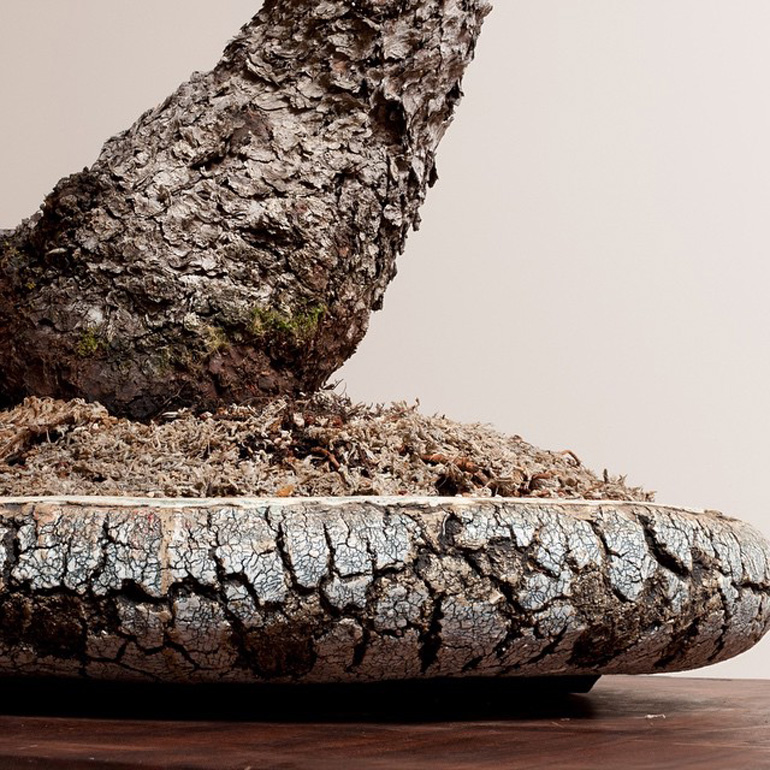
A piece of trunk a piece of pot. A different kind of close-up. Here's Ryan's caption: "Bon-sai means "tree in tray" in Japanese. The container is just as vital to a composition as the tree itself. When a tree and container are well-matched, the union is transformative, as with this pot by Austrian ceramicist Horst Heinzlreiter and its Colorado Blue Spruce."
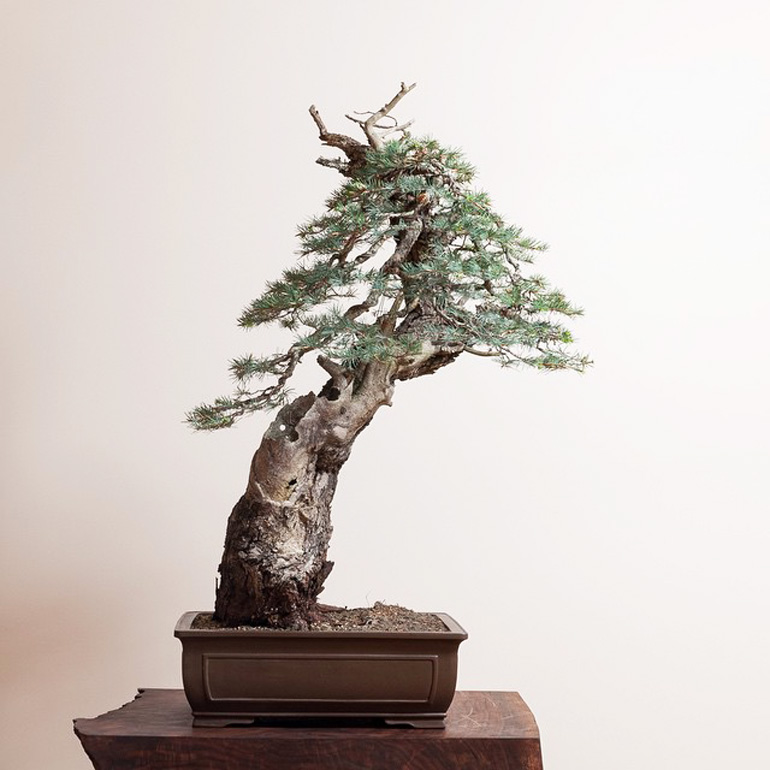
This one is a Douglas fir. Ryan's caption is below.
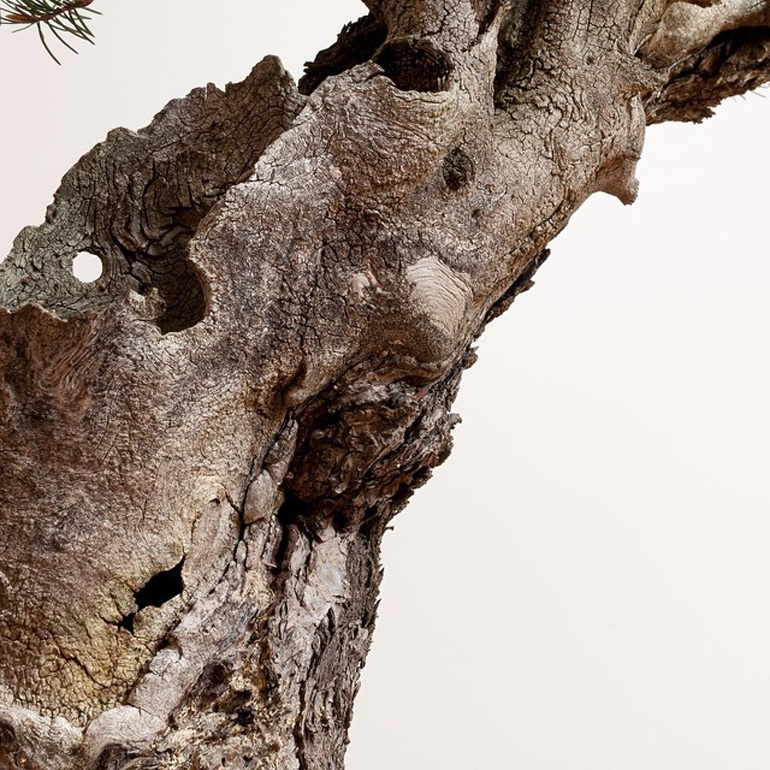
"The Douglas Fir is hypothesized to have been the tallest tree in the world, even taller than the Redwood. But no one knows for sure because the old growth Douglas Firs were all cut down before anyone had the tools to accurately measure. This stunted Doug Fir likely lived back when those Giants stood tall."
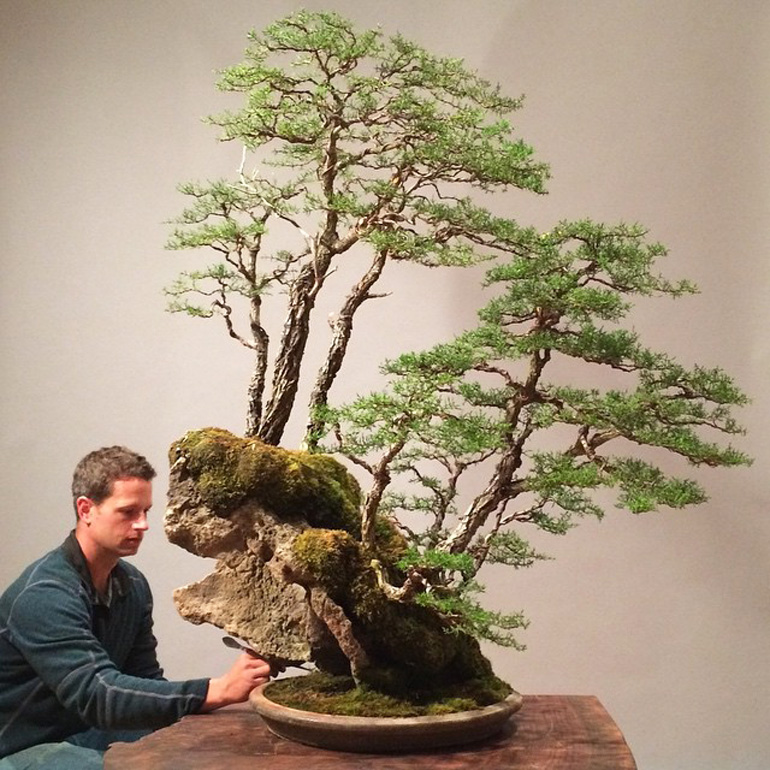
That’s Ryan posing for a professional photo with a one of the most amazing root-on-rock plantings I’ve ever seen. Here’s his caption: “In the studio today with @hornbecker shooting for the Artisans Cup promotional material.” He doesn’t say what the tree’s are.
Bonsai Close Up
Harry Harrington's dramatic closeup of a Trident maple root-over-rock by Ian Cuppleditch.
Sticking with Harry Harrington. But this time it’s photos he took of other people’s bonsai at the Expo Bonsai UK 2018 Show. Here’s what Harry had to say about them… “After many hours of editing my favourite images from yesterday’s Expo Bonsai UK 2018 Show in Harlington, London, England. The show had an incredibly high standard of trees and I was lucky to get some great photos!”
We’re featuring some of Harry’s closeups here. If you’d like to see photos of the entire trees, you can visit Harry’s bonsai4me website
Note: If you’re wondering why we’ve put yesterday’s post up again today, it has to do with defective links in yesterday’s newsletter. Stay posted for today’s post…
I took the liberty of cropping Harry's photo of this Trident maple that belongs to Mark and Ritta Cooper. You can see the original photo of this tree and the other trees shown here on Harry's bonsai4me website
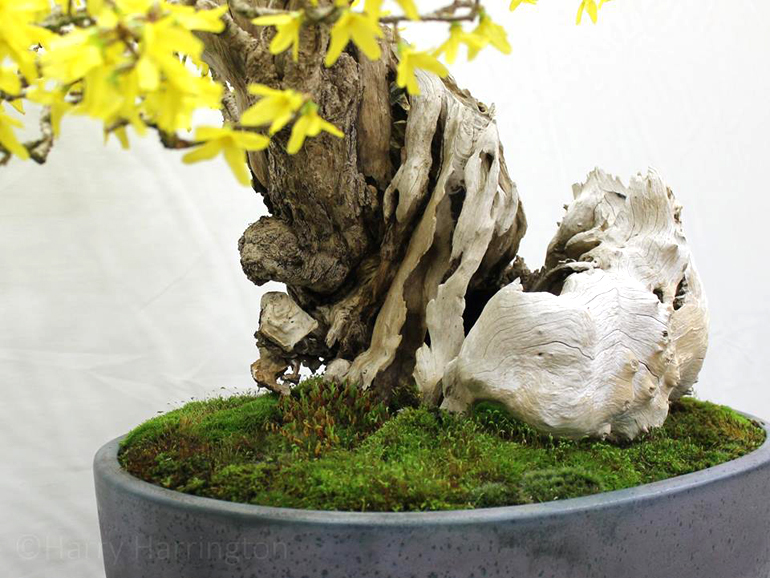
Closeup of a Forsythia bonsai with its early spring flowers. The tree belongs to by Ian Warhurst. The pot is by Walsall Ceramics
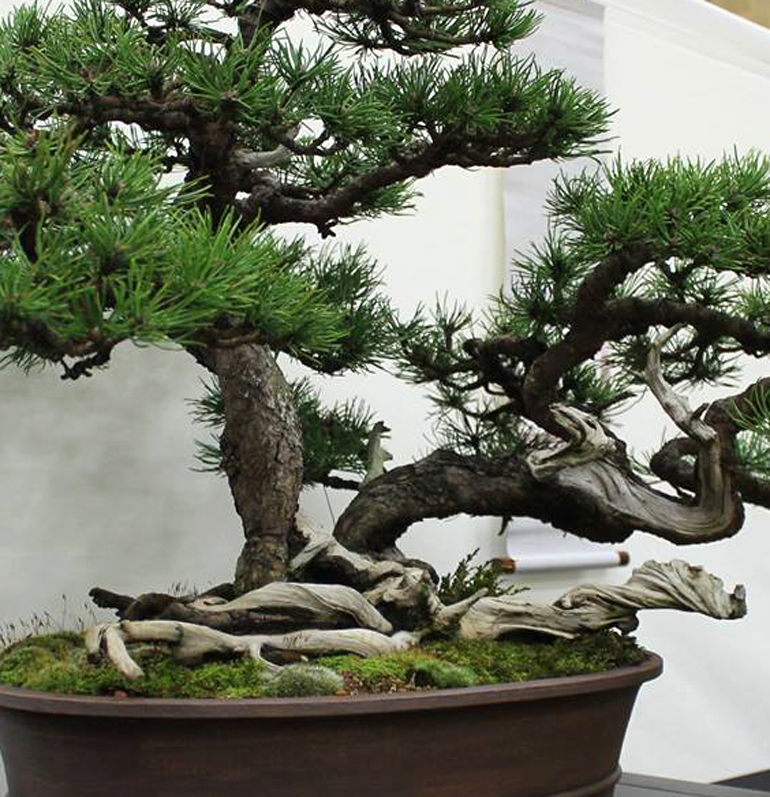
Mugo Pine by Mo Fagan. The pot is from China
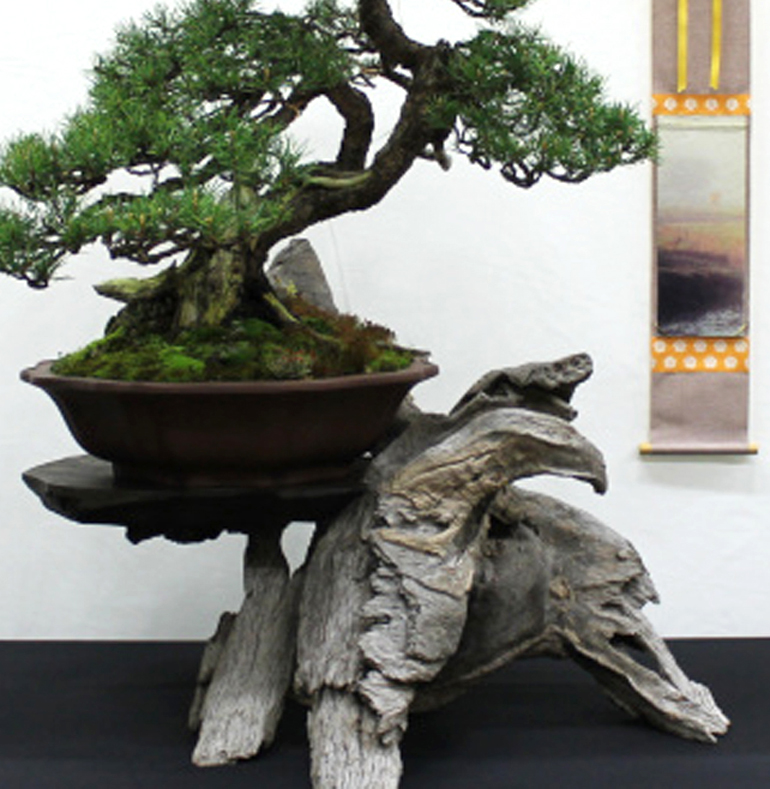
Scots Pine by John Turner. Japanese bonsai pot.
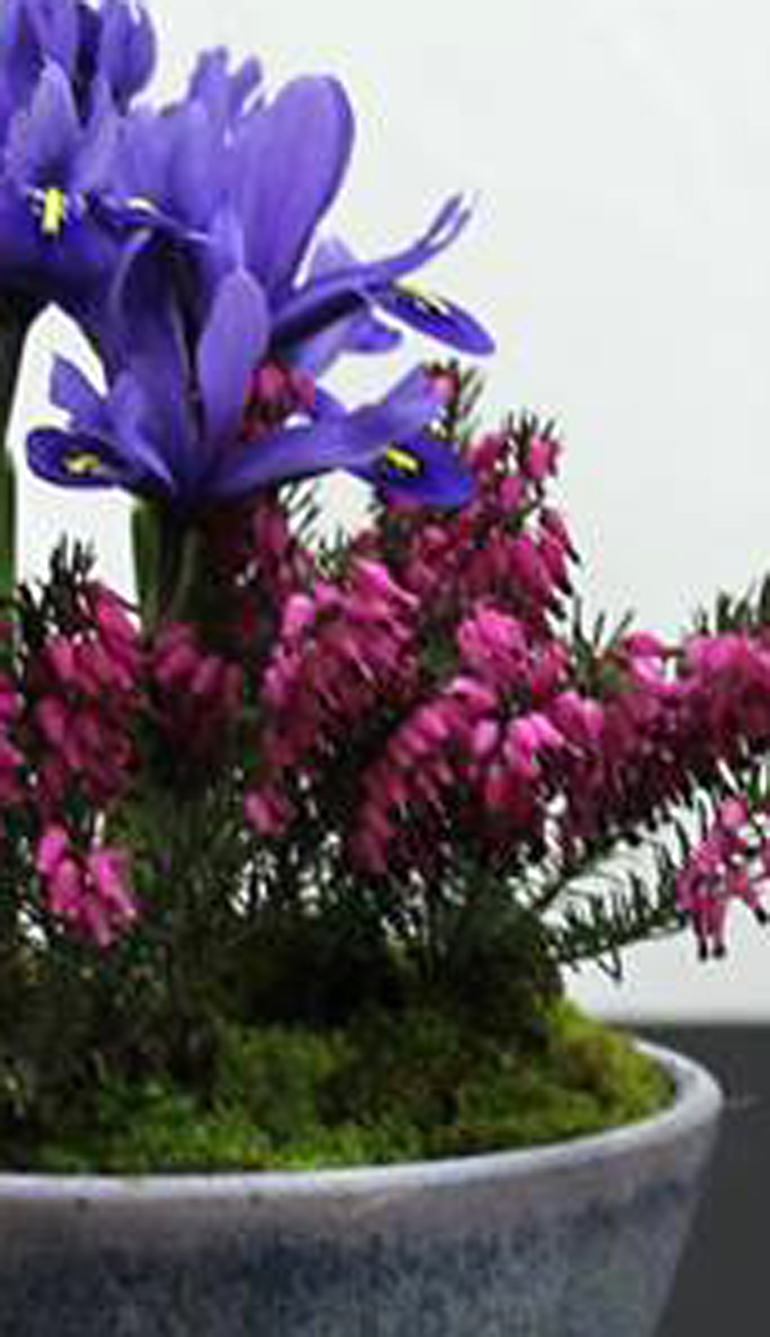
I cropped this accent planting to see if we could get a more abstract feel that emphasizes the colors. It's by Corin Tomlinson. Like all the photos here, you can see the entire bonsai (or accent plant) on Harry's website
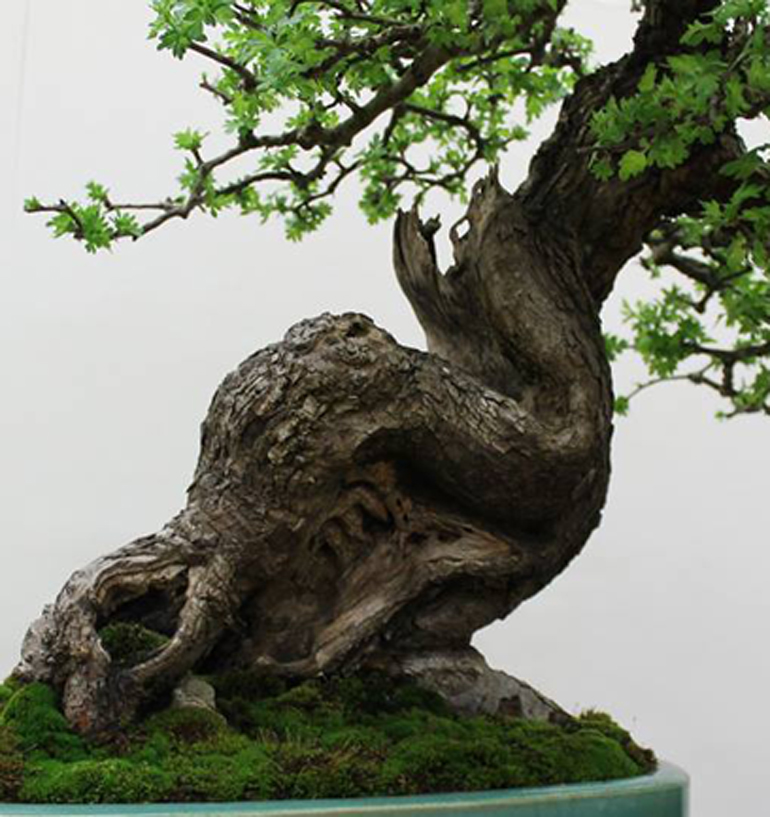
Hawthorn bonsai by Warren Radford. Japanese bonsai pot.

